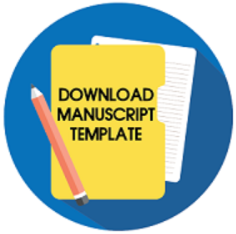The Environmental Utilization as a Learning Resource for Civic Education in Elementary Schools by Prospective Teacher College Students
Downloads
Downloads
"˜Ulum, I. (2017). Pemanfaatan lingkungan sebagai sumber belajar anak. Jurnal Pendidikan Anak, 3(2), 518–523. https://doi.org/10.21831/jpa.v3i2.11707
Andewi, W., & Pujiastuti, D. (2021). Google Classroom: The web-based media for teaching English. Jurnal Penelitian Ilmu Pendidikan, 14(2), 189–198. https://doi.org/10.21831/jpipfip.v14i2.41450
Apriani, R., & Rahmanelli, R. (2018). Environmental utilization as learning resource by Geography teacher to apply religius characteristic in public high school (SMAN) Lombok Timur. Sumatra Journal of Disaster, Geography and Geography Education, 2(1), 129–135. https://doi.org/10.24036/sjdgge.v2i1.125
Atmodiwirjo, P. (2013). School ground as environmental learning resources: Teachers' and pupils' perspectives on its potentials, uses and accessibility. International Electronic Journal of Environmental Education, 3(2), 101–119.
Daryanto. (2016). Media pembelajaran peranannya sangat penting dalam mencapai tujuan pembelajaran. Gava Media.
Dewanti, S. R., & Sujarwo, S. (2021). Development of Instagram and YouTube content videos' for online learning. Jurnal Penelitian Ilmu Pendidikan, 14(2), 181–188.
https://doi.org/10.21831/jpipfip.v14i2.40253
Ferdianto, V. B., & Rusman, R. (2019). Evaluasi implementasi kurikulum muatan lokal bahasa daerah dan pendidikan lingkungan hidup. Jurnal Penelitian Ilmu Pendidikan, 11(2), 117–128.
https://doi.org/10.21831/jpipfip.v11i2.19542
Fitriani, A. N., Purnomo, A., & Ginanjar, A. (2019). Pemanfaatan lingkungan sebagai sumber belajar terhadap hasil belajar IPS Kelas VII SMP Negeri 2 Ambarawa. Sosiolium: Jurnal Pembelajaran IPS, 1(2), 164–168. https://doi.org/10.15294/sosiolium.v1i2.36422
Hasanah, N. (2019). Pengembangan lembar kerja peserta didik berbasis karakter. Jurnal Pendidikan Dan Pembelajaran, 1(1), 24–30. https://doi.org/10.32696/pgsd.v1i1.346
Hasnah, H. (2019). Peningkatan profesionalitas guru dalam pemanfaatan lingkungan sekolah sebagai sumber belajar melalui diskusi Kelompok Kerja Guru (KKG) TK Islam Terpadu Al Azka. Jurnal Literasiologi, 2(2), 113–129.
https://doi.org/10.47783/literasiologi.v2i2.45
Hendarwati, E. (2013). Pengaruh pemanfaatan lingkungan sebagai sumber belajar melalui metode inkuiri terhadap hasil belajar siswa SDN I Sribit Delanggu pada pelajaran IPS. PEDAGOGIA: Jurnal Pendidikan, 2(1), 59–70. https://doi.org/10.21070/pedagogia.v2i1.47
Herwin, H. (2019). Evaluasi program pembelajaran IPS di Sekolah Dasar Negeri 126 Lagoe. DIDAKTIKA: Jurnal Pendidikan Sekolah Dasar, 2(2), 41–48. https://doi.org/10.21831/didaktika.v2i2.28097
Herwin, H., & Dahalan, S. C. (2022). Technological integration factors in parental involvement during distance learning. International Journal of Information and Education Technology, 12(7), 637–642. https://doi.org/10.18178/ijiet.2022.12.7.1664
Kusani, O. N., Tukidi, T., & Nisa, A. N. S. (2019). Pemanfaatan lingkungan sekolah sebagai sumber belajar IPS oleh guru-guru SMP Negeri Kecamatan Sragen. Sosiolium: Jurnal Pembelajaran IPS, 1(2), 122–127. https://doi.org/10.15294/sosiolium.v1i2.36412
Majid, A. (2012). Perencanaan pembelajaran mengembangkan standar kompetensi guru. Rosdakarya.
Muliyono, N. M. (2018). Lingkungan sebagai sumber belajar Bahasa dan Sastra Indonesia. ALFABETA: Jurnal Bahasa, Sastra, Dan Pembelajarannya, 1(1), 78–88. https://doi.org/10.33503/alfabeta.v1i1.217
Mutiani, M. (2016). Pemanfaatan puisi sebagai sumber belajar ips untuk menumbuhkan kesadaran lingkungan peserta didik di SMP Negeri 6 Banjarmasin. JURNAL PENDIDIKAN ILMU SOSIAL, 24(2), 199–2014. https://doi.org/10.17509/jpis.v24i2.1456
Ningrum, W., Herwin, H., & Dahalan, S. (2022). How elementary school teachers integrate technology in social studies learning during the COVID-19 Pandemic? Jurnal Pendidikan Progresif, 12(1), 1–16. https://doi.org/10.23960/jpp.v12.i1.202201
Purnomo, H., & Wilujeng, I. (2016). Pengembangan bahan ajar dan instrumen penilaian IPA tema indahnya negeriku penyempurnaan buku guru dan siswa Kurikulum 2013. Jurnal Prima Edukasia, 4(1), 67–78. https://doi.org/10.21831/jpe.v4i1.7697
Putri, A. M., Khanafiah, S., & Susanto, H. (2014). Penerapan model pembelajaran kontekstual dengan pendekatan snowball throwing untuk mengembangkan karakter komunikatif dan rasa ingin tahu siswa SMP. UPEJ Unnes Physics Education Journal, 3(1), 1–7. https://doi.org/10.15294/upej.v3i1.3110
Rahmawati, M. C., & Dewi, N. D. L. (2019). Kombinasi pendekatan saintifik dan lingkungan serta pengaruhnya terhadap hasil belajar IPA siswa SD. JIPVA (Jurnal Pendidikan IPA Veteran), 3(1), 28–37. https://doi.org/10.31331/jipva.v3i1.677
Sartono, E. K. E., Ambarsari, R., & Herwin, H. (2022). Interactive multimedia based on Indonesian cultural diversity in Civics learning in elementary schools. Cypriot Journal of Educational Sciences, 17(4), 1192–1203. https://doi.org/10.18844/cjes.v17i4.7136
Sartono, E. K. E., Sekarwangi, T., & Herwin, H. (2022). Interactive multimedia based on cultural diversity to improve the understanding of civic concepts and learning motivation. World Journal on Educational Technology: Current Issues, 14(2), 356–368. https://doi.org/10.18844/wjet.v14i2.6909
Satrianawati. (2018). Media dan sumber belajar. Deepublish.
Suhadak. (2018). Usaha meningkatkan prestasi belajar PKn melalui pendekatan kontekstual (contextual teaching and learning) pada siswa kelas IV SDN 02 Demangan Kecamatan Taman Kota Madiun. Jurnal Refleksi Pembelajaran, 3(2), 1–7.
Suhartono. (2018). Usaha meningkatkan prestasi belajar PKn melalui pendekatan kontekstual (contextual teaching and learning) pada siswa Kelas IV SDN 02 Demangan Kecamatan Taman Kota Madiun. Jurnal Refleksi Pembelajaran, 3(2), 1–7.
Sujarwo, S., Kusumawardani, E., Prasetyo, I., & Herwin, H. (2021). Parent involvement in adolescents' education: A case study of partnership models. Cypriot Journal of Educational Sciences, 16(4), 1563–1581. https://doi.org/10.18844/cjes.v16i4.6013
Tjabolo, S. A., & Herwin, H. (2020). The influence of teacher certification on the performance of elementary school teachers in Gorontalo Province, Indonesia. International Journal of Instruction, 13(4), 347–360. https://doi.org/10.29333/iji.2020.13422a
Wahid, F. S., Purnomo, M. A., & Ulya, S. M. (2020). Analisis peran guru dalam pemanfaatan lingkungan sekolah terhadap kreativitas belajar siswa. Jurnal Ilmiah KONTEKSTUAL, 2(1), 38–42. https://doi.org/10.46772/kontekstual.v2i01.247
Wulandari, F. (2020). Pemanfaatan lingkungan sebagai sumber belajar anak sekolah dasar. Journal of Educational Review and Research, 3(2), 105–110. https://doi.org/10.26737/jerr.v3i2.2158
Wuryandani, W., & Herwin, H. (2021). The effect of the think–pair–share model on learning outcomes of Civics in elementary school students. Cypriot Journal of Educational Sciences, 16(2), 627–640. https://doi.org/10.18844/cjes.v16i2.5640
The copyright of the received article shall be assigned to the journal as the publisher of the journal. The intended copyright includes the right to publish the article in various forms (including reprints). The journal maintains the publishing rights to the published articles.

Jurnal Prima Edukasia by http://journal.uny.ac.id/index.php/jpe/index is licensed under a Creative Commons Attribution-ShareAlike 4.0 International License.


























